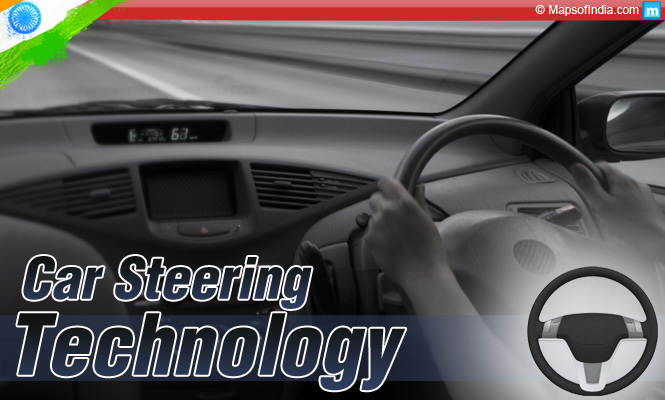One of the most fascinating functional systems of an automobile is the steering wheel mechanism. Like most of the systems, its concept is simple. Turning the steering wheel turns the front wheels accordingly and the car changes direction. The story of the inside mechanism is, however, not that simple.
Majority of the world’s steering systems are made up of the same components more or less. The steering wheel connects to the steering system, that connects to the track rod, which is further connected to the tie rods, that join the steering arms. The tie rods connect to the ends of the track rod with the ball and socket joints and then to the ends of the steering arms with similar joints. The tie rods allow suspension movement as well as adjustability in the steering geometry. The length of the tie rods can be changed according to the required steering geometry.
Types of steering wheel mechanism
Most modern cars employ the rack and pinion steering wheel mechanism, where the steering wheel turns the pinion gear that in turn moves the rack – a linear gear that meshes with the pinion and converts circular motion into linear motion along the transverse axis of the car. This applies steering torque to the swivel pin ball joints that have made previously used elements called the kingpins – of the stub axle of the steered wheel via tie rods and steering arm – somewhat obsolete.
The rack and pinion design has had the advantages of great feedback and a feeling of direct steering mechanism. It is, however, non-adjustable and hence when it wears and develops lash, the only solution to the problem is replacing the whole unit.
The next big breakthrough in steering technology was power steering. Power steering assists the driver in steering by the redirection of some of the vehicle power to swivel the steered road wheels about their steering axes. Since our vehicles became heavier and opted front wheel drive along with the use of negative offset geometry, with greater tyre width and diameter, the overall effort needed to turn the wheels about their steering axis has increased often to the point where a lot of human effort would be required to manoeuvre the vehicle.
Power assisted steering was developed by manufacturers to reduce this physical effort in turning the vehicle both in standard and high speed driving conditions. There is a mechanical linkage as a fail safe. There are generally two types of power steering, hydraulic and electric/electronic power steering.
Four wheel steering system
Next is the active four wheel steering system that allows all the four wheels to turn at the same time when the driver steers. In most active four wheel steering systems, the rear wheels are steered by computer and actuators. The rear wheels do not turn as far as the front ones. There are also controls to turn the rear steer options on and off, and also to steer the rear wheels independent of the front wheels. Generally at low speeds, the rear wheels turn opposite to those at the front, hence cutting the turning radius by up to 25 percent. At higher speeds both the front and the rear wheels turn in a similar fashion, allowing the vehicle to change its position and direction with much less effort. This enhances straight line stability and reduces the turning radius in most cases.
When we turn the steering wheel of the car, we propel it into the direction we point in. This is quite accurate for slow driving. At greater speeds, a major role is played by the chassis and suspension since the vehicle is in much greater momentum. In a regular suspension setup, the two most common problems faced by drivers are that of oversteer and understeer.
Another interesting avatar of complex steering mechanisms is the now receding passive rear axle steering. In this type, the rear suspension of a vehicle allows for the rear wheels to change their steering angle when subjected to centrifugal force that is generated when cornering is done at great speeds.
The dangers of understeer and oversteer
Understeer basically means that the car loses its grip on the front wheels. This generally happens when we brake and the weight is shifted to the front of the car. This causes the car to take a corner or turn, very wide, and can lead to either going over the edge and losing control or simply crashing. To get out of an understeer, letting off the throttle – for front wheel drives , and accelerating – for rear wheel drives, helps the driver to put the nose back in the direction of motion.
Oversteering is the exact opposite of understeer and takes the car more than efficiently where the nose is being pointed and one ends up getting into the corner quicker than anticipated and the rear kicks outward opposite to the direction of the turn. This can cause the car to spin out and end up pointing elsewhere.
Countersteering is basically steering opposite to the direction of the corner and directing the nose of the car out of the corner that the car is taking. In drift racing, drivers use a combination of throttle, weight transfer and handbrake to oversteer into a corner, and then flick the steering in the opposite direction, floor the accelerator and aim at holding the slide all the way around the corner. This is also a technique followed in rally driving.
Steering technology has come a long way from the first simple steering mechanism and has over the years defined the term ‘drive quality’ because of the kind of handling and comfort in manoeuvre of the vehicle that their various types have delivered.




